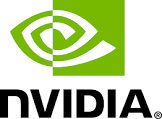$NVDA $TSLA $AMD
#Nvidia #AI #AutonomousDriving #CES2025 #AIRevolution #AutonomousVehicles #Semiconductors #TechStocks #Innovation #StockMarket #ArtificialIntelligence #FutureOfDriving
Wall Street analysts and industry professionals were left divided following Jensen Huang’s ambitious keynote presentation at CES 2025, where he outlined NVIDIA’s plans for the future of artificial intelligence and autonomous driving. Unveiling cutting-edge innovations designed to push the boundaries of computing, Huang emphasized NVIDIA’s commitment to remaining at the forefront of AI technologies. A key highlight of the presentation was the company’s focus on tightly integrating AI capabilities into autonomous driving systems, a move seen by optimists as transformative and by skeptics as overly aggressive in an industry rife with technical and regulatory hurdles. As a result, NVIDIA’s approach has polarized experts, with some seeing it as a paradigm shift and others viewing it as an overextension of its core business.
Prominent investor Ross Gerber, known for his bullish stance on technology, praised Huang’s vision, declaring that “NVIDIA has changed the world” and expressing confidence in the vast potential of its innovations. Gerber’s optimism reflects a wider investor sentiment around NVIDIA stock, which has consistently outperformed the broader semiconductor sector. However, others question whether the company’s accelerated push into AI for autonomous vehicles could stretch resources and expose it to heightened risk. The autonomous driving space has historically struggled with adoption due to technological limitations, safety concerns, and uncertain regulatory conditions—a reality evidenced by setbacks experienced by companies like $TSLA. Analysts warn that NVIDIA’s venture into this evolving sector will not only require significant R&D expenditures but could also face regulatory bottlenecks worldwide.
Another point of interest, particularly for institutional investors, is how NVIDIA’s dominant role in AI chips aligns with its broader strategy in a diversifying market. The company’s advancements in GPUs for AI have been critical to driving its explosive revenue growth in recent quarters. However, this increased reliance on volatile tech applications has created heightened market sensitivity. Any perceived delays or failure to execute on its CES 2025 objectives could potentially trigger a sell-off from shareholders. On the flip side, continuing to outperform expectations on both revenue and innovation fronts may cement NVIDIA’s position as a key driver of the Fourth Industrial Revolution. The rising adoption of AI technologies in various sectors, such as healthcare, automotive, and fintech, has kept investor enthusiasm high, but concerns linger over an increasingly crowded competitive landscape that includes players like $AMD.
In market terms, the stakes for NVIDIA couldn’t be higher. The presentation at CES 2025 also comes amid heightened scrutiny of big tech valuations, particularly as event-driven volatility weighs on the Nasdaq Composite. While NVIDIA’s shares have gained momentum leading into the event, supported by a strong product lineup and healthy demand for AI-related components, analysts caution that this optimism could falter if the firm’s ambitious projections fail to translate into concrete results over the next 12-24 months. Combined with ongoing macroeconomic uncertainties such as high interest rates and questions about the resilience of consumer spending in the tech sector, NVIDIA’s 2025 roadmap represents both a challenge and an opportunity. Nevertheless, with its reputation for disrupting traditional sectors through relentless innovation, NVIDIA may solidify its dominance and open up new revenue streams, depending on how effectively it executes this bold vision.











Comments are closed.